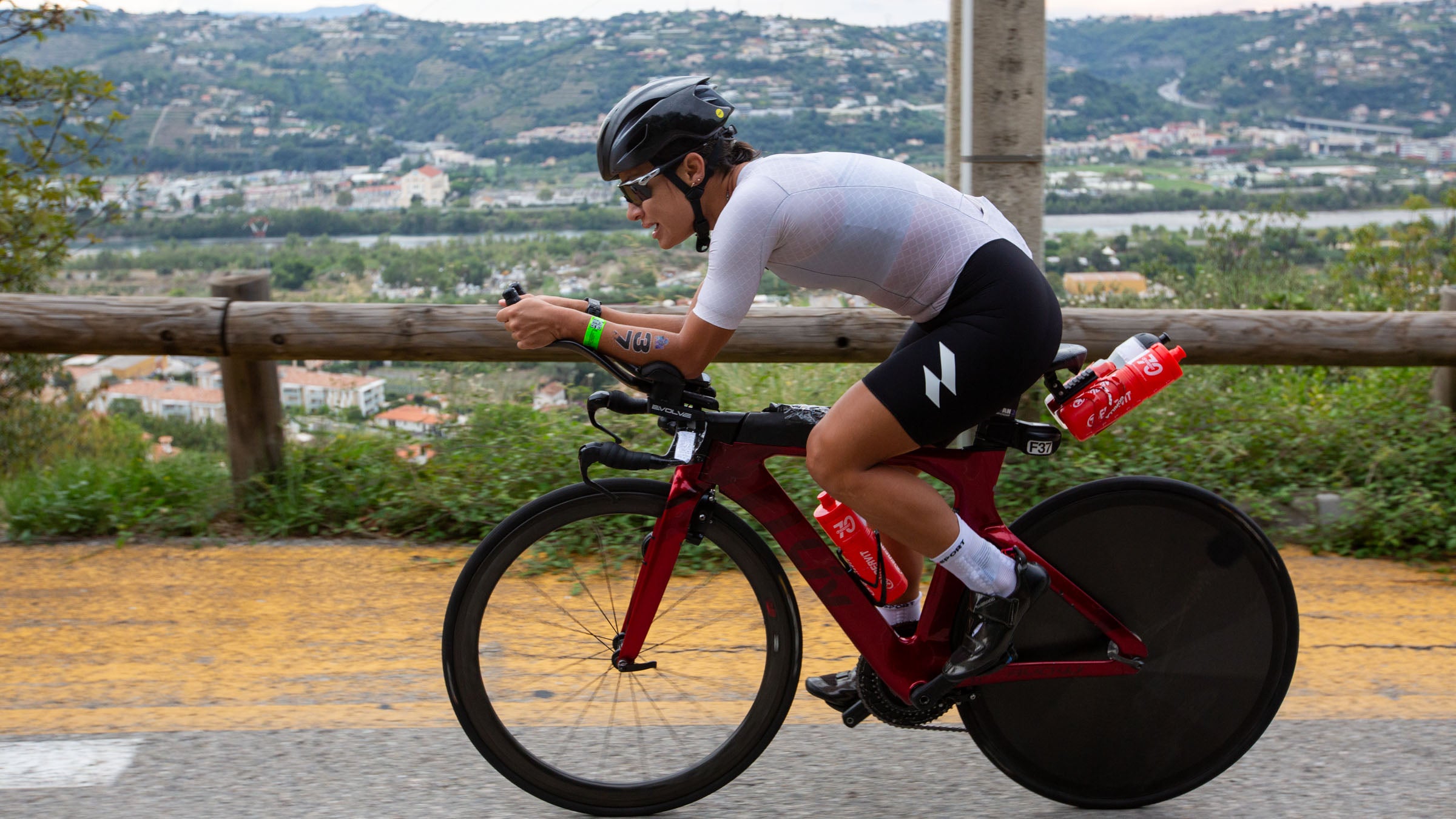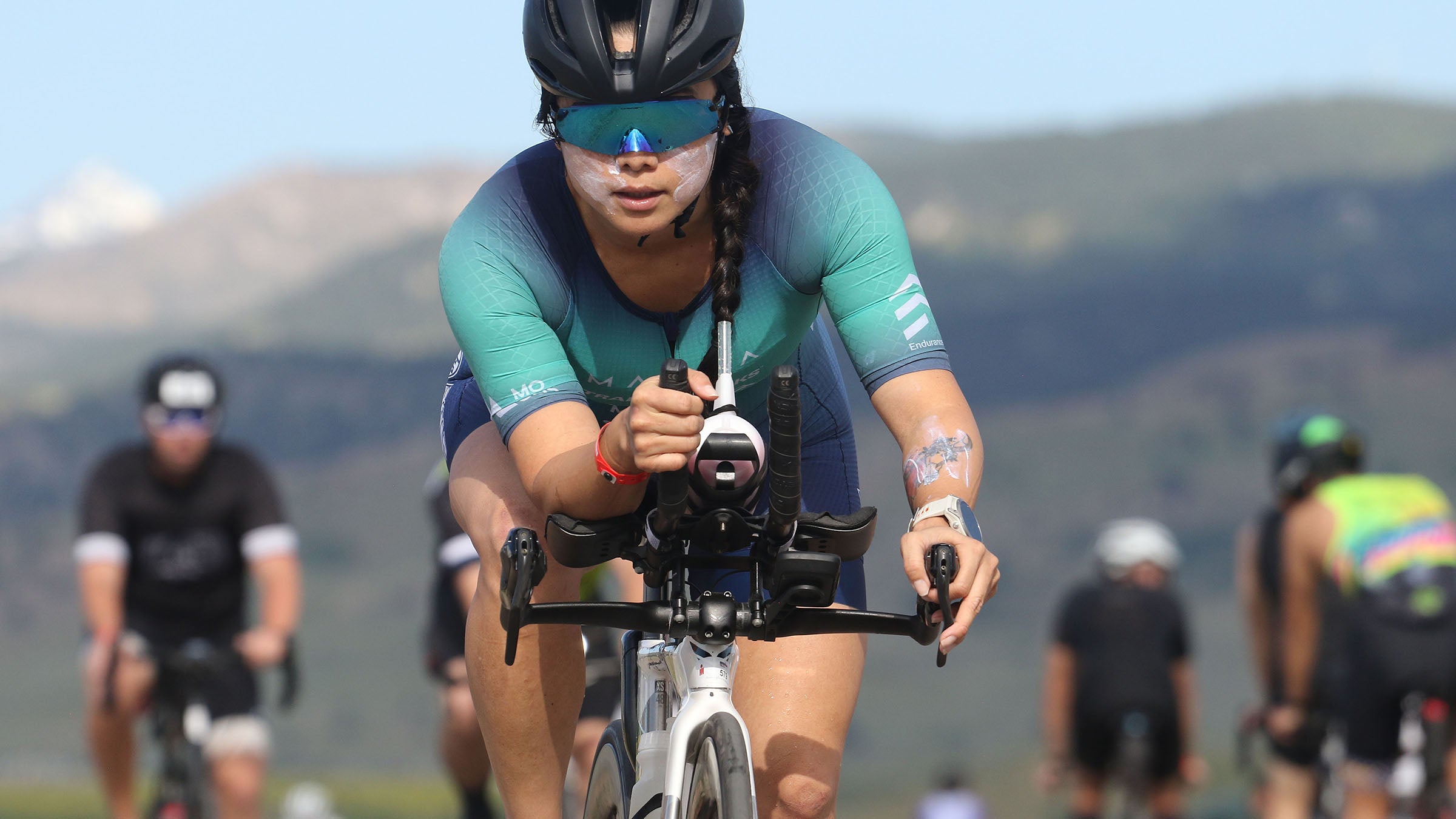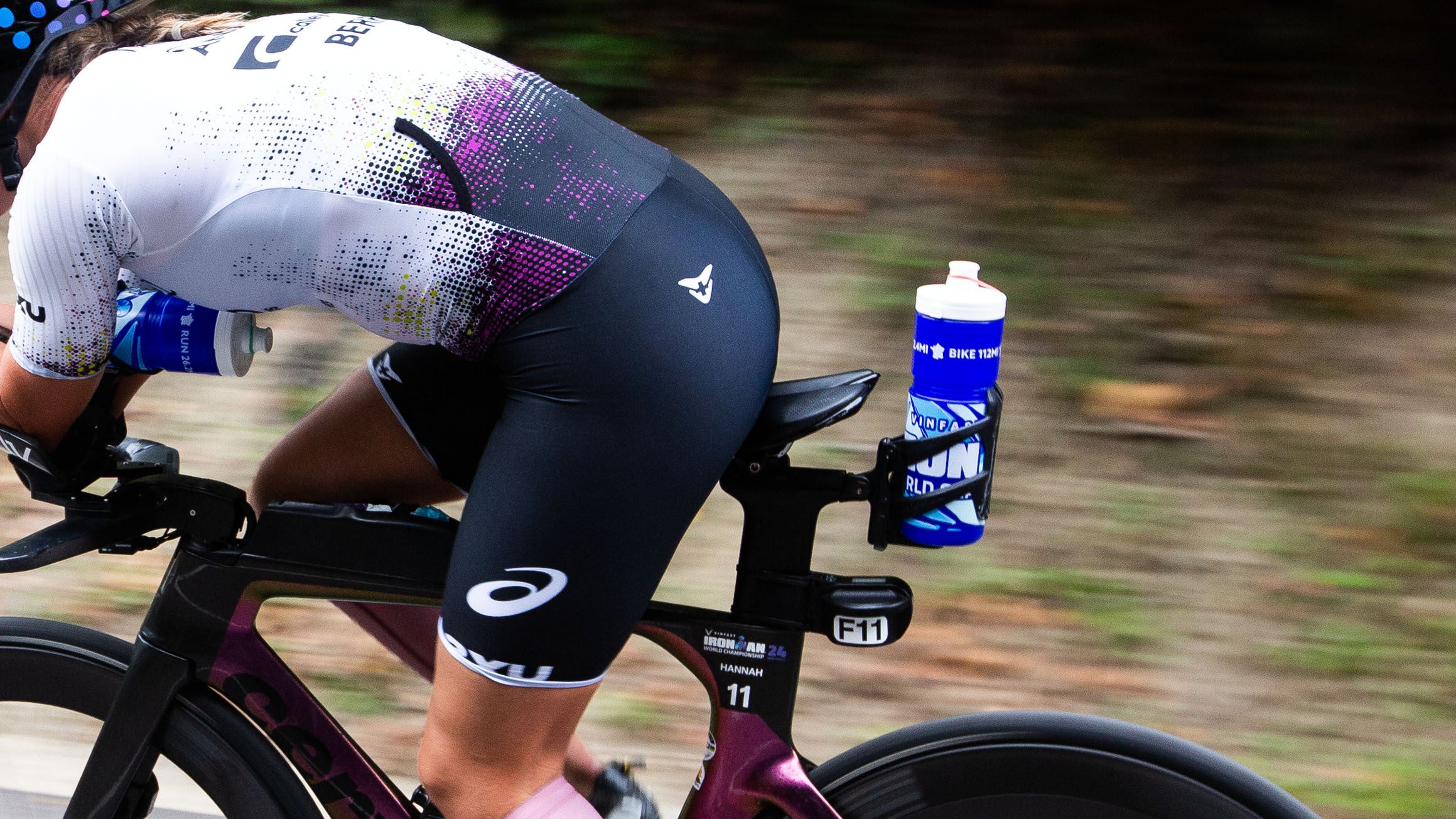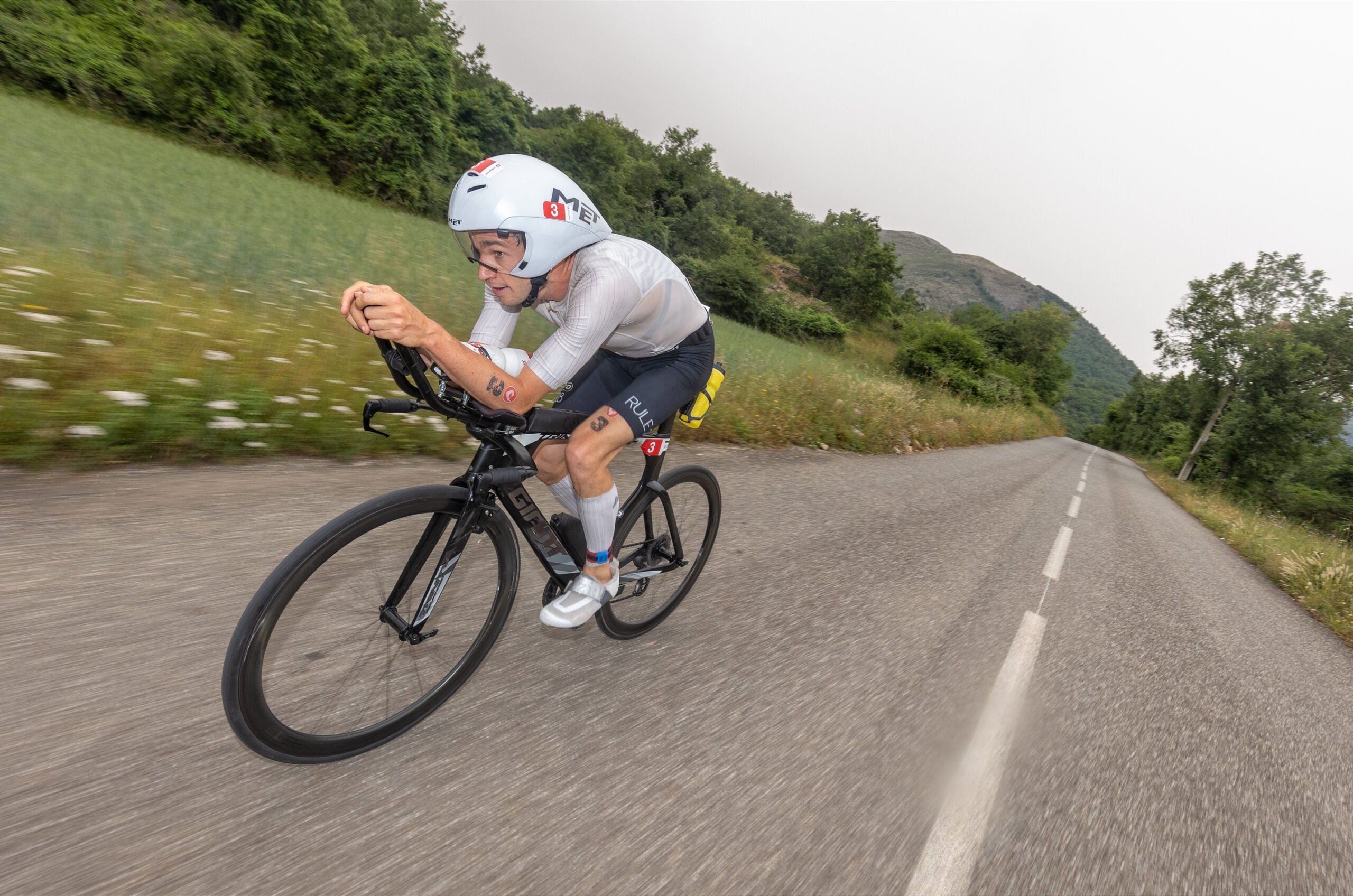New perk! Get after it with local recommendations just for you. Discover nearby events, routes out your door, and hidden gems when you sign up for the Local Running Drop.
As the costs of specialized equipment for cycling, running, and swimming continue to creep, or outright explode upward, many of us have no choice but to be critical of where we put our hard-earned bucks when it comes to improvement. One of the (potentially) cheapest and most effective ways to improve performance is to improve aerodynamics. Some aero improvements that can save athletes dozens of watts cost less than a Chipotle burrito. But other items are extremely expensive and may only give marginal gains—while others can actually slow you down if not used correctly.
For example, we know that water bottle placement can have a profound impact on aerodynamic efficiency, as can calf sleeves, or finding the right type of helmet to fit an athlete’s unique head and body shape. But did you know even these aero slam dunks can be aero-averse if used incorrectly?
Geoff Eaker, the operator of the A2 Wind Tunnel in North Carolina, said that of course several types of gear are more effective than others. However, so much of what works or doesn’t work often depends entirely upon the specific item, the individual using it, and how the two work together (or don’t).
Below, we take a look at four easy-to-make aero fails that can take your gains from positive to negative.
The 4 Top Aero Culprits for Triathletes
Section divider1. Slipping on socks

In cycling, socks are worn everywhere including road, gravel, mountain bike, freeride, or anywhere else. The effectiveness of socks, particularly textured aero socks, has been so well documented that the UCI, the governing body of cycling, has specific rules about how tall a rider’s socks can be.
Eaker, however, said socks are not always the faster option.
“More often than not, when we test socks in the wind tunnel, they are usually slower,” he said, adding that generally around 55% of tests come back with aero losses, not gains.
That tally also is heavily dependent upon the type of sock.
In triathlon, where there are no rules to limit socks, or calf sleeves for that matter, there are far more options for skin coverage that may not require the tedious and time-consuming act of pulling a skin-tight sock over a wet foot while rushing through transition. So, while socks have the potential to bring aero benefits, they can also become a huge penalty for triathletes on race day.
Section divider2. Wearing the wrong skin suit

Skin suits seem like a no-brainer. It’s easy to spend hundreds of dollars on a race-day tri suit that promises to cut through the wind like butter. The latest tech in skin suits includes textured sections of material, usually on the upper arms and shoulders to help reduce drag.
Eaker said the old way of thinking in aerodynamics was that you wanted a skin suit as tight as you can bear it. However, the prevalence of these new textured materials, presents a new issue.
“If those things don’t fit you just right, they can be an impediment,” Eaker said.
The textured portion of skin suits needs to retain its form to hold on to its aerodynamic benefits. If an athlete stretches that fabric out too much and flattens out that texture, they could wipe away some or all of the benefit they would have seen from it. Here, personal fit can be the difference between a $500 suit that makes you faster or one that simply makes you uncomfortable for hours on end.
While excessively tight clothing can negate any texture, overly loose material can even create wrinkles that stick out to the wind like Mount Everest, and further slow you down.
Again, in this case triathletes need to weigh the time to properly adjust their tri suits in T1—especially after a wetsuit swim where material can get pushed and pulled in many different directions. Aero gains in a wind tunnel is one thing, but as Eaker noted, the realities of race day could create situations where those gains disappear—if you’re not thoughtful.
Section divider3. Racing past round water bottles

Entire companies have sprung into existence on the idea that round water bottles are bad. It is worth noting that when used properly, and tailored to fit in certain positions on a bike, aero bottles are generally better. However, many triathletes do not store water solely in the center triangle of their bikes—especially at longer distances.
In other positions, round water bottles can be just as invisible to the wind as aero bottles, or even beneficial. This is why even pros can be found using standard, round water bottles at super important races.
“Even the standard round bottles aren’t always going to be slower, especially behind the seat,” Eaker said. “More often than not, behind the seat is either going to be neutral or benefit you. The old thinking is that round bottles are bad, but that is not always the case.”
In some cases, round bottles can present a serious aerodynamic benefit.
For example, both wind tunnel and real-world testing have shown that shoving a traditional round water bottle down the front of a jersey can shockingly result in watt savings ranging from 5% to 9% – though the practice has been banned by Ironman this year and by World Triathlon (and World Triathlon rule signatory, the PTO).
Also, when placed between the arms or behind the seat, albeit not sticking up high into the wind, round bottles generally don’t present an aerodynamic deficit.
Section divider4. Believing longer is better (helmets, that is)

Triathlon helmets come in an extremely diverse range of shapes. Some are difficult to distinguish from a normal road cycling helmet, while others feature tails or even wing-like aerodynamic designs.
Helmets with longer tails used to be a common sight in triathlons. But now, helmets with shorter tails, or no tails at all, have become more common, while the longer tails of the past have faded away.
A big problem with long-tailed helmets is that most riders do not have the discipline or physical ability to maintain a perfect aerodynamic position for the extended period of time required in a long-course tri’s bike leg.
Every time a rider drops his or her head, tilts it, or looks to the side, a long tail can present a huge sail and create tons of drag.
“The long-tail stuff has pretty much been phased out, and the reason for that is that all of the shorter-tail, the newer-generation stuff, is all faster,” Easker said.
Even shorter-tailed aero helmets can present issues. They are often heavier than more road-oriented helmets and provide less airflow and ventilation. So, while aero helmets may look faster, that isn’t always the case when looking at the rider and their gear as a dynamic system.
Section dividerHow to figure out personal aerodynamics
While some pieces of gear are better than others, the battle for aerodynamic perfection is extremely personal. What works for some people won’t for others, even with the best, most scientifically-refined equipment—especially if you’re not using or wearing the gear properly.
The best way athletes can ensure they are not throwing money down the drain to ineffective aerodynamic gear is to test things out on themselves, either by visiting a wind tunnel, or running some comparative tests in real-world conditions under realistic race-day conditions.
Finally, triathletes need to be realistic about race-day scenarios and thoughtfully critical of aerodynamic product claims: A cycling time trial is a very different use case than the (wet, rushed, busy) cycling leg of your next triathlon. The control that exists in a cycling time trial—where cyclists and their mechanics can spend as much time as they need preparing every little detail—is nothing like the two minutes you have in transition before heading out for hours of real-world triathlon riding and racing.